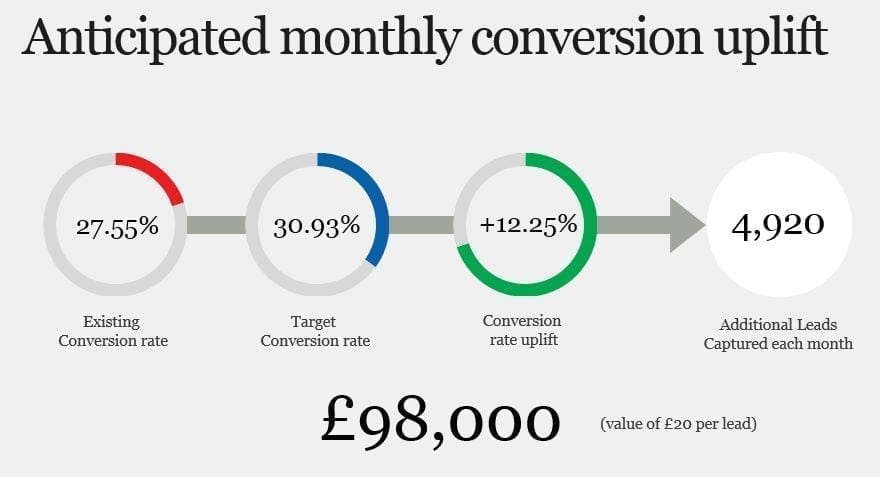Often, one of the greatest challenges for marketers is persuading senior leaders to more fully embrace digital within their organisations. Many marketers have a good idea about what they want to do, but need to argue the case internally in order to receive funding. In many cases, this is the major barrier to moving towards digital transformation.
In those organisations where digital isn’t given much prominence, it is usually because the business has not yet been affected by a real negative impact on their revenues because of digital. Leadership teams haven’t been forced to look holistically at their organisation and consider where digital can play a major role in improving performance.
In organisations where this isn’t a problem, digital is likely to be either a key revenue stream, an operational necessity or a key differentiator, so digital is the key part of the overall business strategy.
In both instances, it is imperative to have a clearly informed business case that helps position how digital can closely align with the goals of the business, and not on digital trends and fashions.
Here are six elements your business case should include:
1.Cost savings
Demonstrate how digital can improve operational efficiency and cost savings. For example, a large client of ours had a number of internal systems which were operating disparately, leading to a fractured system of record management and inefficient and manual business processes.
We designed and built a centralised record management system, which vastly improved efficiency and significantly reduced operational costs. It also opened up new revenue streams.
The cost saving of consolidating disparate systems (e.g. infrastructure, IT maintenance, software licences), makes for a very compelling business case.
2.Real number (in context)
Quantify the expected results of implementing digital. A/B and MVT testing can help to support this with tangible ROI results. For example:

Understanding and quantifying how your website is performing is a complex task. There are so many tools and activities available to marketers these days that help to drive and convert traffic, it’s hard to know where to start and where to focus.
A measurement framework helps businesses to benchmark performance by presenting information in a consistent format, as well as pinpointing areas for improvement.
A measurement framework should:
- Be tied to your company’s business strategy.
- List clear objectives which performance can be measured against over time.
- Outline what tools the business can utilise to collect data.
- Pinpoint what KPIs will be measured to track performance against objectives.
- Detail what activities will be undertaken to help achieve the objectives.
- Download example measurement framework
3.Real-life feedback
User testing is a powerful way to support your case. Talk to users and those people in organisation in customer facing roles, to glean insight. Use these interviews to highlight real examples of where digital is causing issues, or where there are opportunities to maximise your digital touchpoints.
We recommend usertesting.com and whatusersdo.com to undertake user testing.
4.Digital disrupters analysis
Often in business cases, there is an element of comparing activities with competitors to justify why something needs to be done.
Look beyond your usual competitors. What start-ups are out there and how are they using digital technology differently? Disrupters are usually more digitally savvy, and may be able to offer a level of convenience or pricing not offered previously.
Traditional businesses can use existing assets (e.g. reputation, relationships), as a competitive advantage when building digital tools. But make sure you have planned for this; businesses, such as Blockbuster, acted too late to bat off the competition from online competitors like Netflix.
5.Self-sufficieny
As digital is accepted as being critical to achieving business objectives, there will be an increase in organisations wanting to retain digital knowledge internally.
There will always be a need for external suppliers, and there will still be cases where organisations outsource some (or all) of their digital operations. But there will be a push for building the competence of in-house teams and, indeed, improving the digital skills of the entire business.
mproving the capabilities of your internal team can help with staff engagement and retention; if they are given more responsibility and empowerment, a real career path can be visualised.
6.Roadmap & detailed plan
Your business case needs to be supported by a robust plan and detailed costs.
Just because it is written down, does not mean it will happen! Make sure you are very clear on what you want to achieve, by when, with input from who, and how much it will all cost.
Highlight where activities that need business case funding fit into the overall digital roadmap. Identify responsibilities, who is accountable and who needs to be informed of certain decisions.
In summary
By following the below pointers, you will have the basis of a compelling business case to help secure the funding and support you need to drive digital within your organisation.
- Align business case directly against business plan/strategy.
- Use numbers within context of business objectives.
- Provoke emotional reaction for less numerical cases using user feedback.
- Explore all ways that costs will be saved.
- Ensure the business case is sustainable.
- Have a detailed plan with clear responsibilities.
- Don’t ignore threats from digital disruptors.
We help organisations achieve digital transformation. Contact us to find out how we can help you.
More Insights?
View all InsightsQuestions?
Managing Director UK





